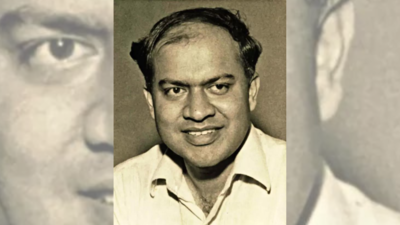Jayant Vishnu Narlikar: Astrophysicist who reached for stars, brought them closer to us | India News

PUNE: In his last blog on March 24 this year, celebrated astrophysicist Jayant Vishnu Narlikar wrote about the importance of stepping back and looking at one’s creations in a detached manner, and delegating work to youngsters.“This is where the IUCAA story is supposed to end,” he said. “Karmayoga advocated by Bhagwad Gita shows the way for a graceful exit,” the founder-director of Inter-University Centre for Astronomy and Astrophysics concluded, almost like a prophetic farewell.Narlikar – rationalist, cricket lover, science communicator, author and scientist who dared challenge the Big Bang theory about origin of the universe – passed away at 86 early Tuesday in his sleep at his Pune home.Just the previous day, Narlikar – who recently underwent hip surgery – had spent three hours reading in the massive wooden recliner that belonged to his father. He then stepped out of his modest home and went for a drive. Later that night, he told his daughter to give him a hug before he went to sleep.Narlikar’s wife Mangala, a mathematician, passed away in 2023. The couple’s three daughters – Geeta, Girija and Leelavati – pursue research careers in science.Narlikar is best known for Steady State Cosmology, an alternative to the widely accepted Big Bang theory. He also worked on Mach’s Principle, quantum cosmology and problems related to quasars and black holes, earning the epithet “Father of Indian cosmology”. “Life beyond earth was another topic that interested him. Since 1999, he also collaborated with Isro and a group of scientists to design experiments that sampled air at altitudes of up to 41km to search for microorganisms.The samples collected in 2001 and 2005 found live cells and bacteria, opening up new possibilities to be explored through experiments,” IUCAA director RSrianand said.Born in Kolhapur, Narlikar graduated from Banaras Hindu University, where his father was a mathematics professor, before going to Cambridge. His mother was a Sanskrit researcher. JNV became a household name in India in 1964 when newspapers across the country wrote about the research by the young Indian and his senior, Fred Hoyle, at Cambridge.Their research looked beyond Einstein’s Theory of Relativity to give an alternative model for gravity that fits into the quasi-steady state model of the universe.At Cambridge, Narlikar became a Wrangler and Tyson Medallist in Mathematical Tripos, was awarded the Smith’s Prize in 1962, and the Adams Prize in 1967. He returned to India in 1972 to join TIFR in Mumbai. It was there that he worked on the idea of founding IUCAA. “It was considered crazy to leave a secure job at TIFR for an unknown, undefined idea. But we did it anyway, setting up IUCAA in 1988, where Narlikar remained founder director for three terms till his retirement in 2003,” Ajit Kembhavi, one of the other founding members and ex-director of IUCAA, said.Carl Sagan’s ‘Cosmos’At heart, Narlikar was as much a science communicator as he was a researcher. Arvind Gupta, known for his creative ways of explaining science through toys and other means, points to the IUCAA tradition of hosting lectures for schoolchildren every month. This has continued for over 40 years. “The science centre in IUCAA was set up with funds from Pu La Deshpande’s trust, but I was sceptical as it was a govt institute. But I got a free hand to shape it and was told I could leave after six months if it felt too bureaucratic.We owe science popularisation to Narlikar. He believed that good PhD students don’t fall from the sky — we have to nurture and inspire them from a young age,” Gupta said.Narlikar’s love for explaining science led to him being featured on Carl Sagan’s popular TV show Cosmos: A Personal Voyage. Colleagues remember him as a remarkably structured individual — someone who, despite wearing many hats, was never in a hurry; despite his fame, never unreachable; and a person who always made time for badminton and tennis during his IUCAA days. His love for cricket was probably only a notch less than that for science.In his blog, he wrote about playing matches during his time at BHU, with Pakistani students when in Cambridge, and recalls being complimented for his batting and bowling by former Test cricketer Chandu Borde during a chance match in Birmingham in July 2002. Rationalist above allFor a man who loved science, belief in rationality came naturally. Hamid Dabholkar, son of slain rationalist Narendra Dabholkar, said Narlikar spoke out against the tendency to find pseudo-scientific reasoning in mythology, published a research paper debunking astrology, and even provided a mobile planetarium to activists working to dispel superstition — enabling them to travel to villages and explain eclipses and other natural phenomena.Narlikar’s friendship with eminent Marathi writer Pu La Deshpande is well-known. But even among ordinary citizens, he had a lasting impact.Jasin S, who works for a private firm in New Delhi, said he may not remember what he recently read online, but vividly recalls two chapters from his Class VIII and IX NCERT English textbooks. “One was ‘The Comet’ and the other was ‘The Adventure’ by Narlikar. That was my introduction to science fiction. I didn’t know who he was, but he was an amazing writer. I was fascinated by the concept of a parallel universe in The Adventure.Now, I read everything I can about black holes, astrophysical discoveries, and life on Mars,” he said. Narlikar’s body will be kept at IUCAA from 11.15am till noon Wednesday before the final journey to Pune’s Vaikunth crematorium.




